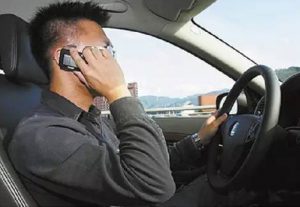Equipment worth $50 brought a multi-million dollar project to a standstill. You have established a base station in an open environment, have properly monitored its location, and are tracking the signals from all satellites visible above you, with a good signal-to-noise ratio. What could be wrong?
On the construction site in 2015, the following situations may and may not go wrong. An important construction project is underway. An army consisting of excavators, bulldozers, pile drivers and levelers moves in a narrow space, and their activities are carefully coordinated by the RTK guidance system. The foreman knows the position of each car down to the centimeter. The GNSS positioning was lost without any warning, and warning messages stagnated on the screens of the operator and the steering device in the work area, which resulted in machine downtime, several days or even days of downtime, and loss of working time.
The culprit: personal data protection equipment. The location is close to busy roads and commercial vehicles are frequently seen. Their driving is usually monitored by positioning equipment that includes a GNSS receiver. Such equipment can ensure, for example, that the driver will not exceed the legal driving time or avoid tolls.

In recent years, more and more drivers have adopted cheap GNSS portable jammer to bypass undetected locations or block the built-in anti-theft system. Typical illegal car chi sound jammer (also known as personal privacy device or PPD)
The problem is that even if the performance of these GNSS jammers or PPDs (Personal Privacy Devices) is poor, the performance of GNSS signals is even lower. The PPD powered by the 12 V cigarette lighter socket is strong enough to shut off GNSS signals within a radius of several hundred meters. As GPS trackers are increasingly used for insurance or tolls, the number of accidents has greatly increased in recent years.
The latest report from the Department of Homeland Security (DHS) Homeland Infrastructure Threat and Risk Analysis Center (HITRAC) recorded the 2011 Newark Liberty Airport incident, in which PPD caused harmful interference to the new GPS-based landing system. Subsequent monitoring since then has confirmed that an average of 5 interference events occur per day. According to the report, PPD is one of the three major threats to GPS/GNSS interference.
GNSS is not just positioning, GNSS applications have already surpassed positioning. GNSS has become part of the critical infrastructure in many fields such as cellular communications. Vendors use GPS time to manage communications between mobile phones and telephone towers, and use GPS to time-stamp transactions in banks and stock markets to prevent fraud.